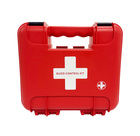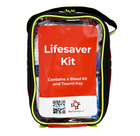Elevation Techniques
Unlock This Video Now for FREE
This video is normally available to paying customers.
You may unlock this video for FREE. Enter your email address for instant access AND to receive ongoing updates and special discounts related to this topic.
Limb Elevation Techniques for Bleeding and Shock
Introduction
Elevating or moving limbs effectively aids in managing bleeds and mitigating shock. Explore various techniques for limb elevation.
Office Chair Elevation
Method: Utilize an office chair to raise both legs, allowing gravity to return blood volume to the core, thus increasing blood pressure.
Assessment: Monitor radial pulse; restoration of radial pulse indicates blood pressure improvement.
Knee Elevation
Method: Substitute a knee to elevate limbs when an office chair is unavailable. This technique maintains free hands for assessment.
Shoulder Elevation
Method: Elevate a limb onto a shoulder, keeping hands free for patient care and evaluation.
Utilizing Joint Bends
Technique: Leveraging limb joint bends allows for effective elevation. Supporting limbs in the correct position prevents blood loss and improves blood pressure.
Motorcycle Helmet Support
Method: Placing a motorcycle helmet under the arm of a motorcyclist with a limb injury maintains limb elevation, aiding in reducing blood flow and loss.
Postural Drainage
Approach: Implement postural drainage techniques to promote blood return to the core, enhancing blood pressure and patient recovery.
Conclusion
Employing various limb elevation techniques, whether with equipment or improvised methods, plays a crucial role in managing bleeding, alleviating shock, and aiding patient recovery.

_-Trauma_10x10_CE.jpg)




_-Trauma_8x20_CE.jpg)
